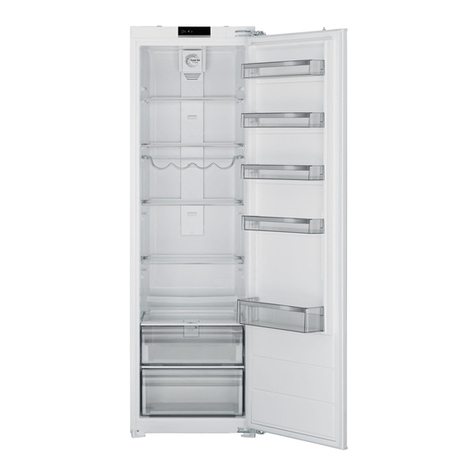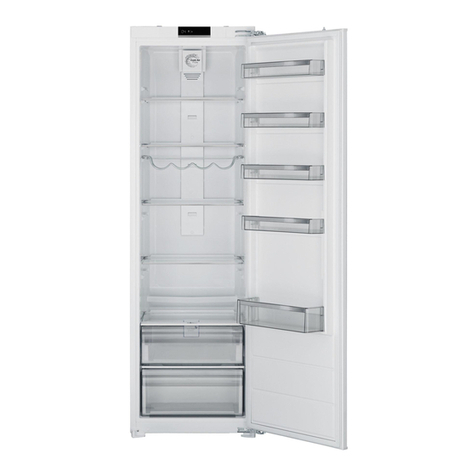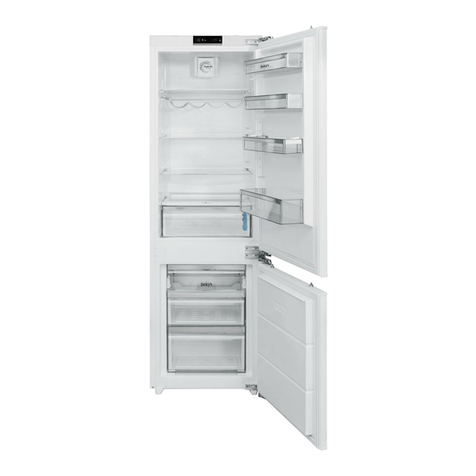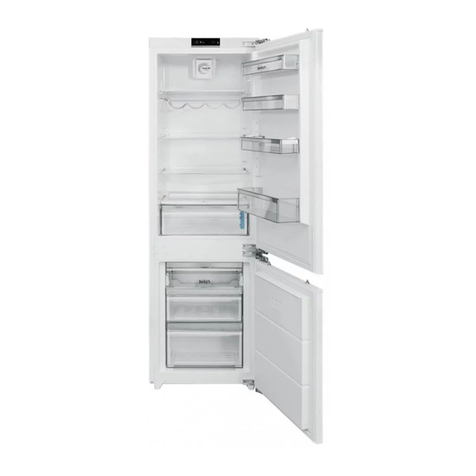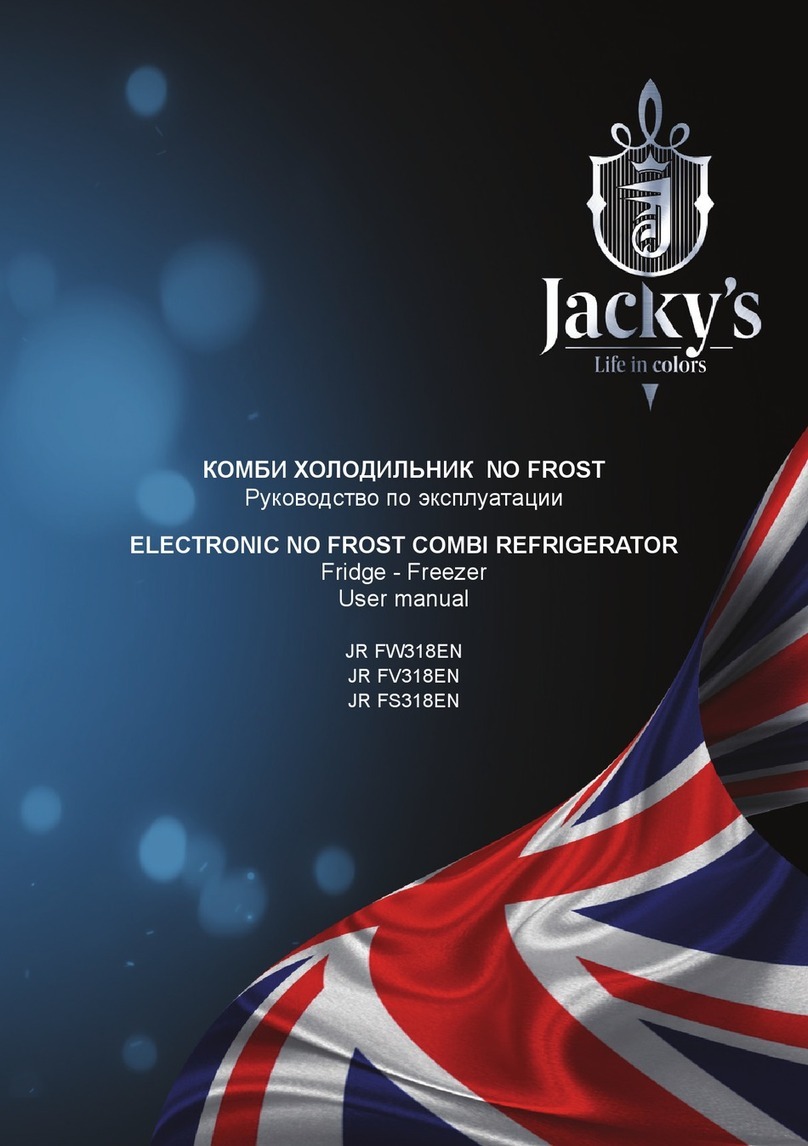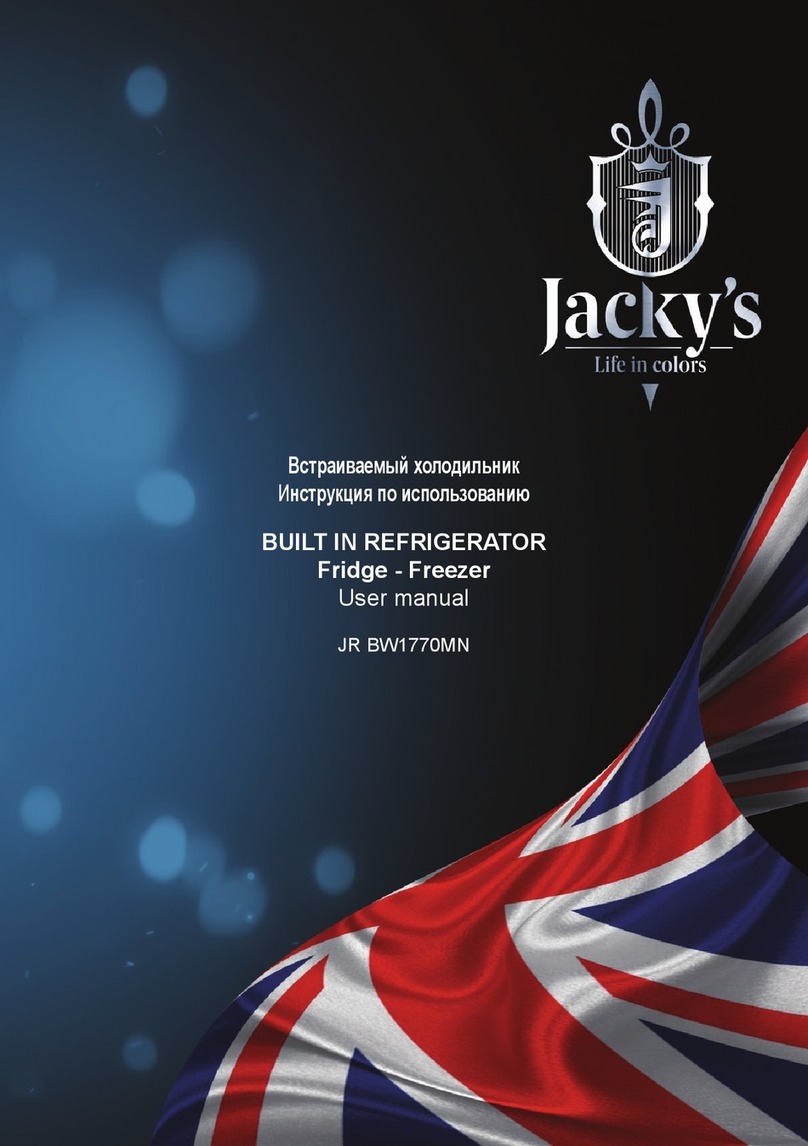
EN - 4 -
Old and out-of-order fridges or freezers
• If your old fridge has a lock, break or remove the lock before discarding it, because
children may get trapped inside it and may cause an accident.
• Old fridges and freezers may contain isolation material and refrigerant with CFC
or HFC. Therefore, take care not to harm environment when you are discarding
your old fridges.
Please ask your municipal authority about the disposal of the WEEE reuse,
recycle and recovery purposes.
Notes:
• Please read the instruction manual carefully before installing and using your appliance.
We are not responsible for the damage occurred due to misuse.
• Follow all instructions on your appliance and instruction manual, and keep this manual
in a safe place to resolve the problems that may occur in the future.
• This appliance is produced to be used in homes and it can only be used in domestic
environments and for the specied purposes. It is not suitable for commercial or
common use. Such use will cause the guarantee of the appliance to be cancelled and
our company will not be responsible for losses incurred.
• This appliance is produced to be used in houses and it is only suitable for cooling
/ storing food. It is not suitable for commercial or common use and/or for storing
substances except for food. Our company is not responsible for losses to be incurred
in the contrary case.
Safety warnings
• Do not connect your fridge freezer to the mains electricity supply using an extension
lead.
• Do not plug in damaged, torn or old plugs.
• Do not pull, bend or damage the cord.
• This appliance is designed for use by adults, do not allow children to play
with the appliance or let them hang off the door.
• Never touch the power cord/plug with wet hands as this could cause a
short circuit or electric shock.
• Do not place glass bottles or beverage cans in the ice-making compartment
as they can burst as the contents freeze.
• Do not place explosive or ammable material in your fridge. Place drinks
with high alcohol content vertically in the fridge compartment and make
sure that their tops are tightly closed.
• When removing ice from the ice-making compartment, do not touch it. Ice may
cause frost burns and/or cuts.
• Do not touch frozen goods with wet hands. Do not eat ice-cream or ice cubes
immediately after you have taken them out of the ice-making compartment.
• Do not re-freeze frozen goods after they have melted. This may cause health issues
such as food poisoning.
